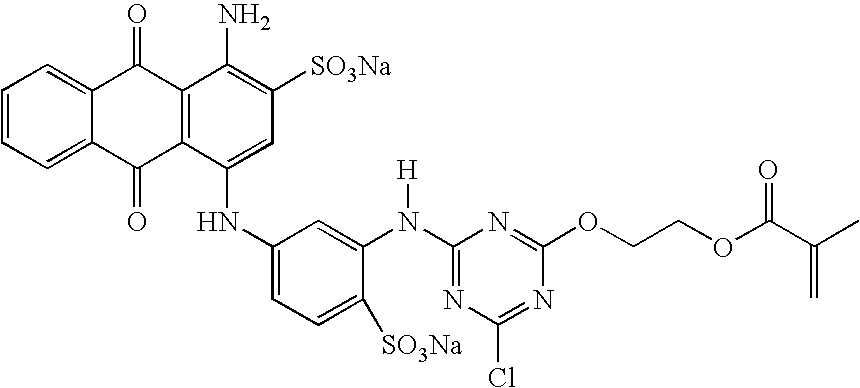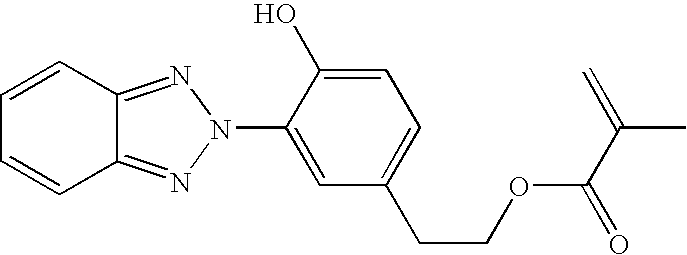Polymerization process and materials for biomedical applications
- Summary
- Abstract
- Description
- Claims
- Application Information
AI Technical Summary
Benefits of technology
Problems solved by technology
Method used
Image
Examples
example 1
[0134] A temperature-controlled 250-mL four-neck flask equipped with a thermometer, condenser, and nitrogen inlet was charged with 10 g of polyethylene glycol having an average molecular weight of 400 (PEG 400, Aldrich) as a non-reactive non-volatile diluent and 20 g of acetone as a volatile solvent. The mixture was stirred for a few minutes before adding 10 g of 2-hydroxyethyl methacrylate (HEMA), 0.15 g of methacrylic acid (MAA), and 12 mg of azobisisobutyronitrile (AIBN) as an initiator. The mixture was then purged with purified nitrogen while stirring for approximately 15 minutes.
[0135] The solution was slowly heated to and maintained at 60° C. for 2 hours to carry out polymerization. After polymerization, a clear and highly viscous liquid, semi-solid, or hydrogel was formed. The mixture was then cooled down to room temperature and 0.21 g of methacrylic anhydride (MA) was injected as a functionalizing agent. The reaction between the hydroxyl of HEMA and MA proceeds spontaneousl...
example 2
[0138] A reaction vessel identical to that of Example 1 was charged with 15 g of PEG 400 and 18 g of acetone. The mixture was stirred for a few minutes before adding 15 g of HEMA, 0.21 g of MAA, and 15 mg of AIBN. The mixture was then purged with nitrogen while stirring for approximately 15 minutes. Next, the solution was slowly heated to and maintained at 60° C. for 3 hours to carry out polymerization. Because the viscosity of reaction medium increases during polymerization, it may be advantageous to add more solvent to the reaction medium during polymerization to ensure the completion of the reaction and to reduce the crosslinking of copolymer. In this example, 10 g of acetone was further added to the reaction mixture after one hour from the start of polymerization reaction and additional 10 g of acetone was also added to the solution after 2 hours from the start of polymerization.
[0139] After polymerization, the reaction mixture was cooled down to room temperature and 0.32 mL of...
example 3
[0140] A copolymer pHEMA-co-MAA was synthesized according to the procedure described in Example 1. After polymerization, 0.18 g of glycidyl methacrylate was injected as a functionalizing agent into the reaction mixture and the functionalization reaction was carried out at room temperature for 24 hours under vigorous stirring. The volatile solvent and residual impurities were then removed by vacuum distillation. The resulting precursor mixture was a clear semi-solid that is suitable for biomedical products and devices which require minimum purification step prior to their intended use.
PUM
| Property | Measurement | Unit |
|---|---|---|
| Fraction | aaaaa | aaaaa |
| Fraction | aaaaa | aaaaa |
| Solubility (ppm) | aaaaa | aaaaa |
Abstract
Description
Claims
Application Information
 Login to View More
Login to View More - R&D
- Intellectual Property
- Life Sciences
- Materials
- Tech Scout
- Unparalleled Data Quality
- Higher Quality Content
- 60% Fewer Hallucinations
Browse by: Latest US Patents, China's latest patents, Technical Efficacy Thesaurus, Application Domain, Technology Topic, Popular Technical Reports.
© 2025 PatSnap. All rights reserved.Legal|Privacy policy|Modern Slavery Act Transparency Statement|Sitemap|About US| Contact US: help@patsnap.com


